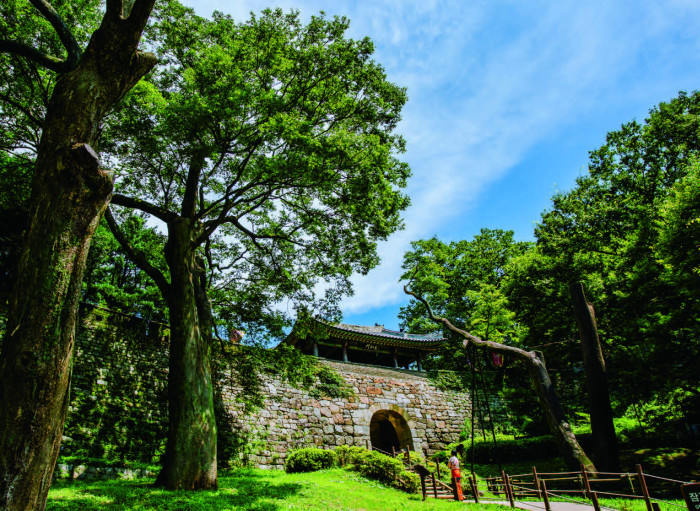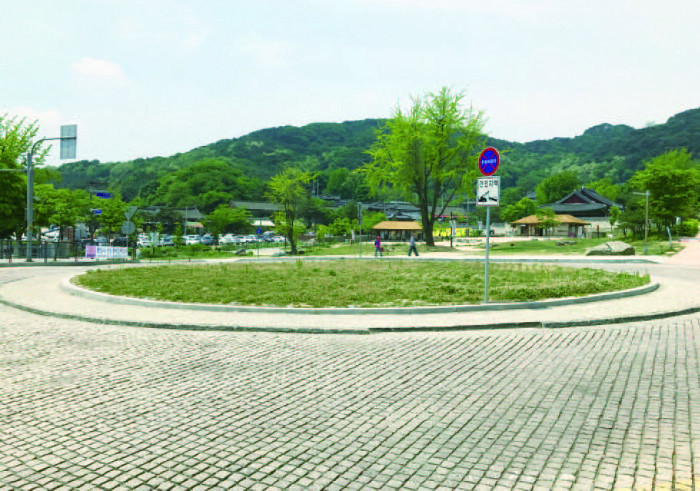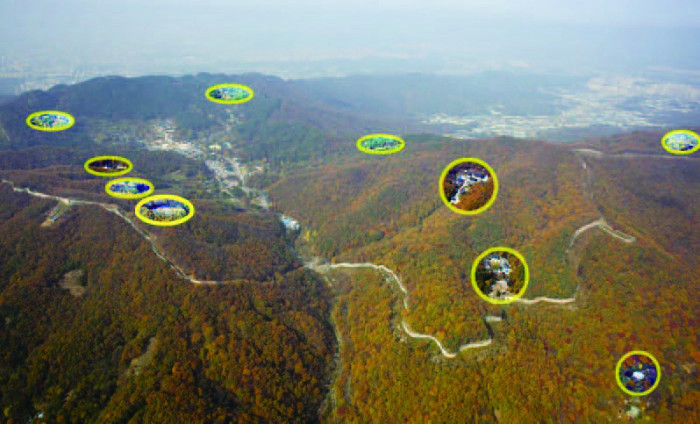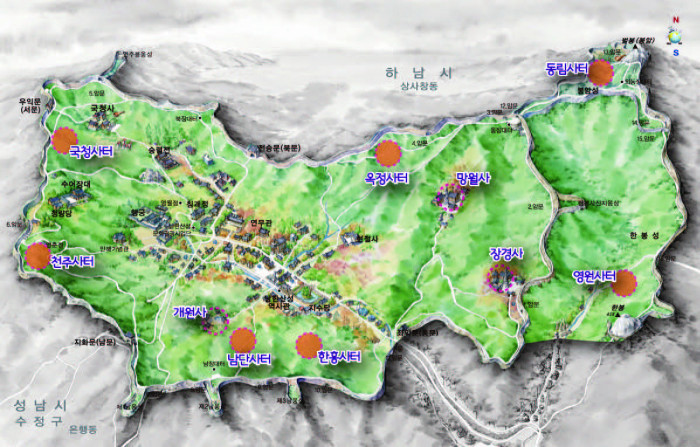GyeongGi Cultural Foundation
4 gates and Buddhist temples
The sights of Namhansanseong (1)
"Stories on the Road" is a story about a UNESCO World Heritage site and a story. It will tell you the life and spirit of our ancestors in the ancient road of The old Namhansanseong path. |
Gates

South gate of Namhansanseong Fortress
“4 gates of extraordinary status”
Namhansanseong Fortress has four gates. Like the four main gates of Hanyang, the four gates of Namhansanseong Fortress are called Jwaikmun (east gate), Uikmun (west gate), Jihwamun (south gate) and Jeonseungmun (north gate). They resemble the names of the gates of Hanyang, don’t they? The largest of them is Jihwamun, which is set on Bonghwaro, a central road of Namhansanseong Fortress, along with Jwaikmun. Jihwamun, through which kings’ royal processions, wagons, various traders, and residents used to pass, is connected to Jwaikmun along the old Namhansanseong path. This is the most essential route of the old Namhansanseong path, formed along the route that passes the north, west, and south gates with the fortress rotary at the center.
Rotary

Namhansanseong Rotary
“Base point within Namhansanseong Fortress”
Bonghwaro, which was the core arterial road network inside Namhansanseong Fortress, is connected through the south and east gates, and the important routes that lead directly from the center of the fortress to the east (today's Hanam) and the south (Songpa, Macheon) of Hanyang are connected from a single point; it is the Namhansanseong Rotary. Measurement of distances from Namhansanseong Fortress in ri to, for example, the east or south are determined with respect to the rotary. It is a landmark located just in front of the palace, and thus psychologically serves as a central point for people passing through this area. Sanseong-ri is a village located within Namhansanseong Fortress, and the residents of Sanseong-ri would define locations psychologically by thinking of how far they must go to the north, west, south, or east from the rotary to reach the palace, government office, mill, or marketplace. Just like the residents, many citizens who visit Namhansanseong Fortress still speak with reference to this rotary when talking about certain locations within Namhansanseong Fortress.
Buddhist temples


Actual image and location map of the temple site in Namhansanseong Fortress
“Buddhism exists only where a nation and its people exist.”
There are especially many Buddhist temples in Namhansanseong Fortress. Let's list the names of the temples, shall we?
① Janggyeongsa Temple, ② Mangwolsa Temple, ③ Dongnimsa Temple, ④ Okjeongsa Temple, ⑤ Gaewonsa Temple, ⑥ Hanheungsa Temple, ⑦ Namdansa Temple, ⑧ Cheonjusa Temple, ⑨ Gukcheongsa Temple, and ⑩ Yeongwonsa Temple.
Why are there so many temples here?
In addition to the spiritual aspect where the area is a sacred place known for patriotic Buddhism, there is another reason: the formation of the Buddhist army. After experiencing the Japanese invasion in 1592 that destroyed the entire country, Joseon realized the importance of military power. At the time of the Japanese invasion, monks held hwalingeom, or ‘people-saving swords’, in their hands instead of moktak, and played a remarkable role along with the volunteer armies. After the war against the Japanese, King Injo constructed Namhansanseong Fortress in 1624 and planned to utilize the monk troops who showed an outstanding performance during the war in a systematic manner. As a result, a total of nine temples (excluding Yeongwonsa Temple, which was built later) were established in Namhansanseong Fortress. Eight of the temples were stationed in all of the provinces as bases for monk troops, and the ninth temple was added to act as the headquarters.
<Copyright(c)2002 GGC All rights reserved.>
information
Stories on the Road
Published by/ Namhansanseong World Heritage Centre, Gyeonggi-do The Center for Gyeonggi Studies, Gyeonggi Cultural Foundation
Published on/ November 24, 2017
Supervised by/ Lee Ji-hoon, Director of the Center for Gyeonggi Studies, Gyeonggi Cultural Foundation
Planned and coordinated by/ Chae Chi-yong, Senior Researcher at the Center for Gyeonggi Studies, Gyeonggi Cultural Foundation Park Da-seul, Researcher at the Center for Gyeonggi Studies, Gyeonggi Cultural Foundation
- Writer
- GyeongGi Cultural Foundation
- About
- Everything about the GyeongGi arts and culture, GGCF
- homepage
- http://www.ggcf.kr